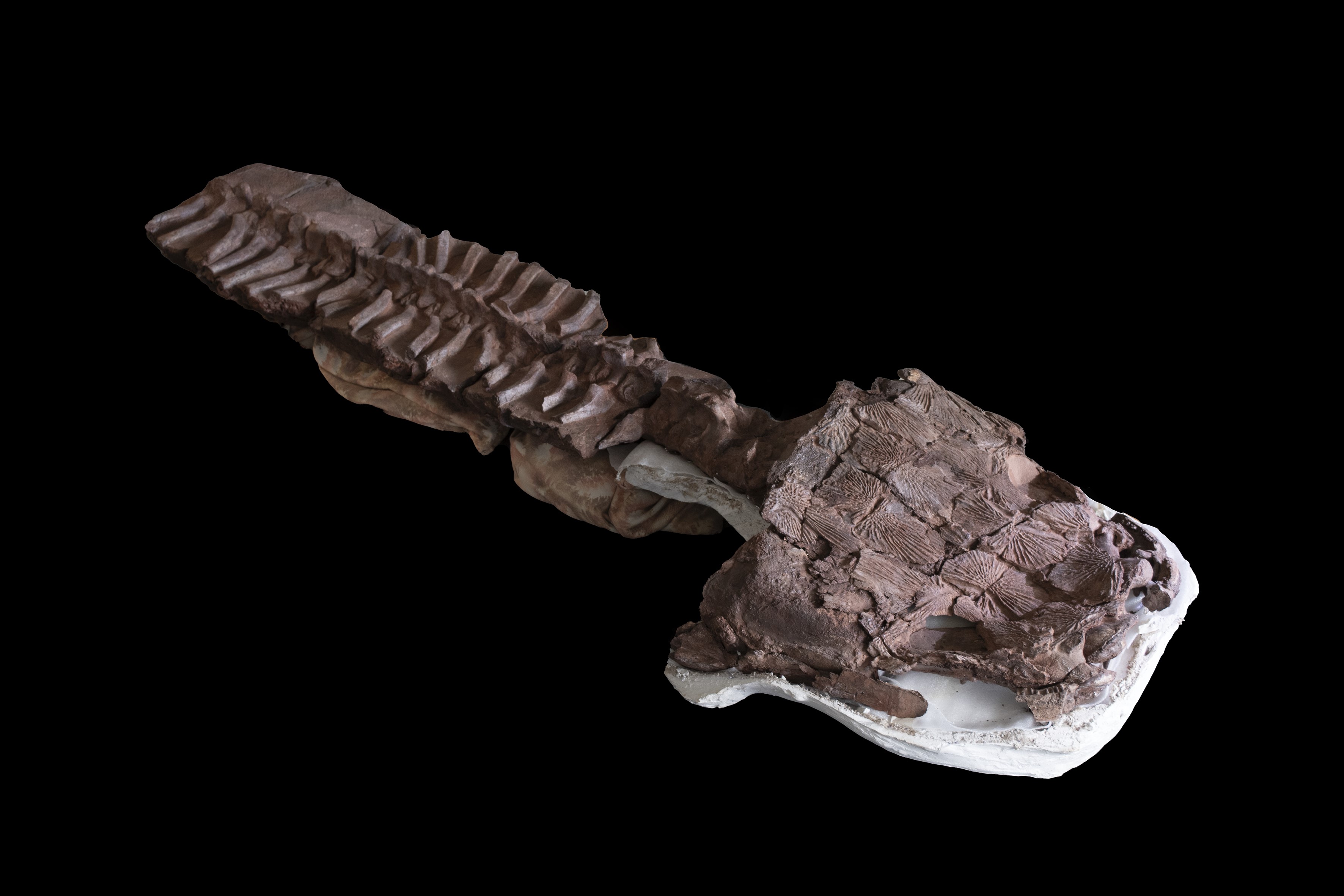Media release
From:
A giant salamander-like predator
Gaiasia jennyae, a large salamander-like animal that lived in the early Permian (about 280 million years ago) in what is now Namibia, is described in Nature this week. A predator with a skull estimated to be 60 cm long, it was possibly the largest creature of its kind. The findings fill a gap in the fossil record and indicate that early tetrapods were more globally distributed than previously thought.
Most ideas about the early evolution of tetrapods (four-limbed land vertebrates, such as amphibians, reptiles, mammals and birds) come from fossils discovered from the extensive coal-producing ancient equatorial wetlands of what is now Europe and North America. But Gaiasia, discovered in northwestern Namibia, comes from much further south, living in an area of the great southern supercontinent Gondwana at around 55 degrees south.
The classification is based on fossils of at least four incomplete individuals, including skull fragments and an incomplete vertebral column. Claudia Marsicano and colleagues estimate a basal skull length of 60 cm, which is much larger than relatives from Europe and North America. The skull and jaw structure indicate that Gaiasia had a powerful bite capable of capturing large prey. In an accompanying News & Views article, Christian Sidor writes: “the evidence suggests that Gaiasia had an overall body length of more than 2.5 metres.”
The authors suggest that Gaiasia is an archaic creature related to extinct amphibian-like animals called colosteids that are more characteristic of an even earlier age and are thought to have been replaced by more modern amphibians and reptiles in the late Carboniferous period, around 307 million years ago. The specific name jennyae is in honour of the late Jennifer A. Clack (1947–2020), a pioneer palaeontologist whose work transformed ideas of the early evolution of tetrapods.



 International
International



